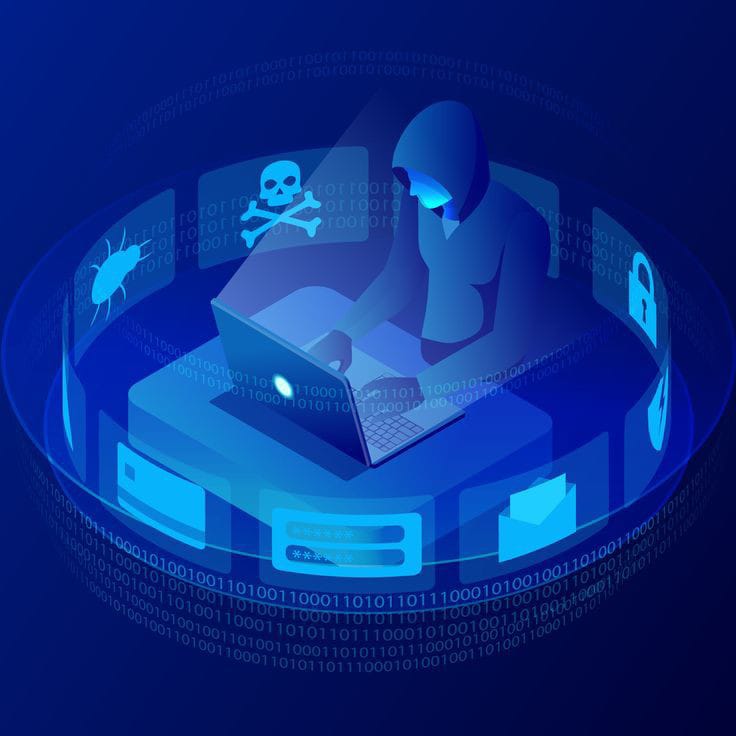The Rising Tide of Cyber Criminal Attacks: Understanding the Threat and How to Protect Yourself
In today’s hyper-connected world, cybercrime has become one of the most significant threats to individuals, businesses, and governments alike. As technology advances, so do the tactics of cybercriminals, making it essential for everyone to understand the nature of these attacks and how to defend against them. In this blog, we’ll explore the different types of cyber criminal attacks, their impact, and practical steps you can take to safeguard your digital life.
What Are Cyber Criminal Attacks?
Cyber criminal attacks are malicious activities carried out by individuals or groups with the intent to steal, damage, or disrupt digital systems, networks, or data. These attacks can range from stealing personal information to crippling entire organizations. Cybercriminals often exploit vulnerabilities in software, hardware, or human behavior to achieve their goals.
Common Types of Cyber Criminal Attacks
1. Phishing Attacks
Phishing is one of the most common and effective cyberattacks. Cybercriminals send fraudulent emails, messages, or websites designed to trick victims into revealing sensitive information like passwords, credit card numbers, or Social Security numbers. These attacks often appear to come from trusted sources, such as banks or well-known companies.2. Ransomware
Ransomware is a type of malware that encrypts a victim’s data, rendering it inaccessible until a ransom is paid. These attacks have targeted hospitals, schools, and businesses, causing significant financial and operational damage.
3. Malware
Malware, short for malicious software, includes viruses, worms, trojans, and spyware. It can infect devices to steal data, monitor activity, or cause system failures.
4. Distributed Denial of Service (DDoS) Attacks
In a DDoS attack, cybercriminals overwhelm a website or online service with traffic, causing it to crash. These attacks are often used to disrupt businesses or extort money.
5. Man-in-the-Middle (MitM) Attacks
In MitM attacks, hackers intercept communication between two parties to steal data or inject malicious content. This often occurs on unsecured public Wi-Fi networks.
Social engineering relies on psychological manipulation to trick individuals into divulging confidential information. This can include impersonating a colleague, tech support, or even a friend.
7. Insider Threats
Not all cyberattacks come from external sources. Insider threats involve employees or contractors who misuse their access to steal data or sabotage systems.
The Impact of Cyber Criminal Attacks
The consequences of cyberattacks can be devastating:
- Financial Losses: Businesses can face massive financial losses due to theft, ransom payments, or operational downtime.
- Reputation Damage: A data breach can erode customer trust and damage a company’s reputation.
- Legal and Regulatory Consequences: Organizations may face fines or lawsuits for failing to protect sensitive data.
- Personal Harm: Individuals can suffer identity theft, financial fraud, or emotional distress as a result of cyberattacks.
How to Protect Yourself Against Cyber Criminal Attacks
1. Use Strong Passwords and Multi-Factor Authentication (MFA)
Create complex, unique passwords for each account and enable MFA wherever possible. This adds an extra layer of security.
2. Keep Software Updated
Regularly update your operating system, apps, and antivirus software to patch vulnerabilities.
3. Be Cautious of Phishing Attempts
Never click on suspicious links or download attachments from unknown sources. Verify the sender’s identity before sharing sensitive information.
4. Secure Your Network
Use a firewall, encrypt your Wi-Fi, and avoid using public Wi-Fi for sensitive transactions.
5. Back Up Your Data
Regularly back up important files to an external drive or cloud storage. This can help you recover data in case of a ransomware attack.
6. Educate Yourself and Others
Stay informed about the latest cyber threats and share this knowledge with friends, family, and colleagues.
7. Monitor Your Accounts
Regularly check your bank accounts, credit reports, and online accounts for suspicious activity.
8. Invest in Cybersecurity Tools
Consider using antivirus software, VPNs, and encryption tools to enhance your digital security.
The Future of Cybercrime
As technology continues to evolve, so will the tactics of cybercriminals. Emerging threats include attacks on artificial intelligence systems, the Internet of Things (IoT), and even quantum computing. Governments and organizations are working to strengthen cybersecurity measures, but individuals must also remain vigilant.
Conclusion
Cyber criminal attacks are a growing threat in our digital age, but with awareness and proactive measures, you can significantly reduce your risk. By staying informed, using strong security practices, and investing in the right tools, you can protect yourself and your data from falling into the wrong hands. Remember, cybersecurity is not just a technical issue—it’s a shared responsibility.
Stay safe, stay secure, and don’t let cybercriminals win.
What steps are you taking to protect yourself from cyberattacks? Share your thoughts and tips in the comments below!








Comments
Post a Comment